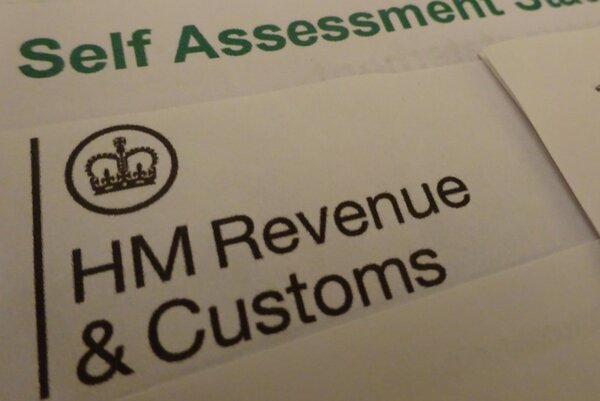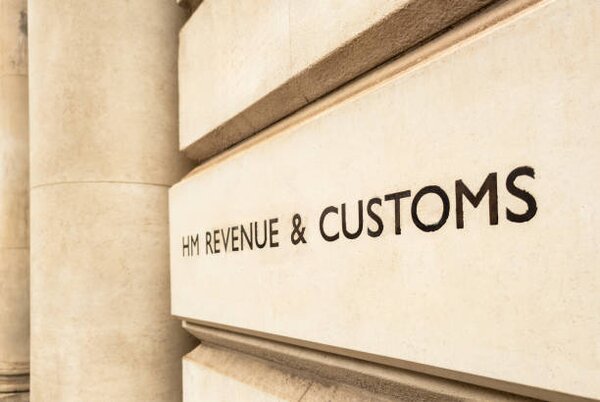How it works...
Opening your HMRC estimated tax bill can feel like decoding a mysterious message. These estimates directly impact your cash flow, finances, and financial planning throughout the year, making it essential to understand them for effective financial management.
Understanding how HMRC calculates these figures empowers you to better manage your tax obligations. Knowing when to challenge incorrect estimates can save you significant money.
Pie tax‘s real-time tax calculator helps you stay ahead of these estimates so you’re never caught off guard. Or if you’re just here to get to grips with it all, let’s break it down!
What is an HMRC estimated tax bill?
An HMRC estimated tax bill is a projection of what they think you’ll owe based on your previous year’s income and tax situation. It’s not a random guess, it’s a calculated estimate. This estimate helps you understand how much tax you might owe for the year.
For self-employed people and those with multiple income sources, these estimates form the basis of your income tax bill under the “Payment on Account” system. This approach helps spread tax payments throughout the year.
Think of it as a tax instalment plan rather than a fixed bill. It’s HMRC’s way of helping you budget for tax payments in advance. However, if you run your own business, the estimate may not always reflect the complexities of your business finances, such as fluctuating income or allowable expenses.

How HMRC works out your estimated tax bill
HMRC examines your last tax return and essentially says, “We think you’ll earn about the same this year, so your tax will be similar.” The estimate is calculated based on your previous year's income and tax situation. This straightforward approach works well when your income remains stable.
The calculation typically includes Income Tax, Class 4 National Insurance contributions, and any Student Loan repayments. Only income that is taxed is included in the estimate. Certain amounts, such as tax already deducted at source, may be considered in the calculation.
Allowable expenses are not always automatically included in the estimate. The calculation involves deducting allowable expenses from your income to determine the taxable amount. These elements combine to create your total estimated liability.
What it doesn’t do is automatically adjust for major changes in your circumstances. If your income drops significantly or you close your business, you must inform HMRC yourself.
Payment on Account: The heart of estimated tax bills
Payments on account is the system that splits your estimated self assessment tax bill into two instalments, due on 31 January and 31 July. These are advance payments towards your next tax bill, with each payment representing 50% of your previous year’s tax bill.
This system aims to spread your tax burden throughout the year rather than hitting you with one massive bill. Making payments on time is crucial to avoid penalties and interest. Each instalment is paid towards your next tax year’s liability.
If your advance payments do not cover your full tax liability, you will need to make a balancing payment after submitting your tax return to settle the remaining amount owed for your self assessment tax bill.
I remember my first year of self-employment when I was caught off guard by the January payment. Not only did I owe tax for the previous year, but also the first instalment, an advance payment towards my next tax bill, nearly doubling what I’d budgeted for!
When HMRC's estimates might be wrong
If your income has dropped significantly, the estimate will likely be too high. This happens often with seasonal businesses or during economic downturns. HMRC's estimate may not reflect your actual circumstances in the current tax year, so it's important to check if recent changes have been considered.
Other common scenarios include stopping self-employment or changing your business structure, which can affect the amount owed. Perhaps you’ve formed a limited company or now pay more tax through PAYE.
The system doesn’t automatically detect these changes, it’s up to you to flag them with HMRC. Being proactive here can prevent unnecessary financial strain. Always review your assessment tax bill to ensure it matches your actual liability and the amount owed.

How to challenge an estimated tax bill
You can ask HMRC to reduce your Payment on Account by completing form SA303 or doing it online through your tax account. You’ll need to provide a reasonable estimate of your actual tax liability. Do this as early as possible before payment deadlines to avoid paying more than necessary. The process is straightforward but requires accurate income projections. If you overpay, you can request a refund from HM Revenue.
Be careful not to underestimate, though. Check your assessment return to ensure your payments and estimates are correct. If your actual tax ends up higher than your reduced estimate, HMRC will charge interest on the difference.
Keeping Accurate Records for Your Estimated Tax Bill
Keeping accurate records is the foundation of a smooth self assessment tax return and an accurate estimated tax bill. Whether you’re self employed, have property income, or manage multiple income streams, detailed record-keeping throughout the tax year is essential for calculating your tax liability and ensuring your assessment tax return is correct.
Start by tracking all your income sources, this includes self employment profits, employment, property income, and any investments. Keep supporting documents like invoices, payslips, bank statements, and rental agreements. This not only helps you calculate your taxable income but also ensures you don’t miss any income that HMRC expects to see on your tax return.
Next, organise your eligible expenses. Save receipts and records for every business cost, from equipment and travel to training and office supplies. Categorising these expenses makes it easier to claim the right tax reliefs and reduce your final tax bill. Don’t forget to keep records of any capital gains or losses from selling investments or assets, as these can affect your overall tax situation and may need to be reported on your assessment tax return.
National insurance contributions are another key area, track your payments to ensure they’re correctly reflected in your tax affairs and to avoid any surprises when it comes to your tax calculation. Store all tax-related documents, including your Government Gateway account details, previous tax returns, and any correspondence with HMRC, in a secure and accessible place.

Important deadlines for your tax payments
31 January is the big due date in the tax calendar. This is when you pay any remaining tax from the previous tax year plus your first Payment on Account for the current year. 31 July is when your second Payment on Account is due. Missing these deadlines can be costly and stressful.
HMRC charges 3% interest on late payments, plus surcharges that increase the longer you delay. If you pay late or underpay, you will be charged interest on the outstanding amount. Setting calendar reminders well in advance can help you avoid these penalties.
Setting up a direct debit through your online account can help ensure payments are made on time and reduce the risk of missing a due date.
Final Thoughts
Estimated tax bills are simply HMRC's way of collecting tax progressively throughout the year. They're designed to help, not hinder, your financial planning. Always review your estimates against your actual financial situation. If things have changed significantly, take action promptly to adjust your payments.
Good record-keeping is your best defence against paying too much tax. With clear figures at your fingertips, you can quickly spot when HMRC's estimates don't match reality.
Pie tax: Simplifying Tax Estimates Management
Managing your estimated tax payments doesn’t have to give you a headache. Our app provides a real-time tax estimate to help you plan and pay estimated tax as you earn, eliminating nasty surprises.
The UK’s first personal tax app, Pie tax provides a complete picture of your tax situation and helps you manage your estimated taxes across all income streams. This makes it easy to spot discrepancies in HMRC’s calculations.
We send friendly reminders before Payment on Account deadlines so you’re never caught unprepared. The dashboard tracks your income, expenses, and tax liability throughout the year. This means you’re always making decisions based on up-to-date information. Curious to see how it works? Take a look at Pie tax when you have a moment.











